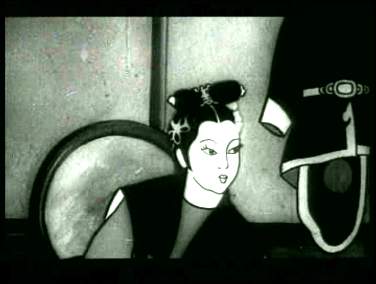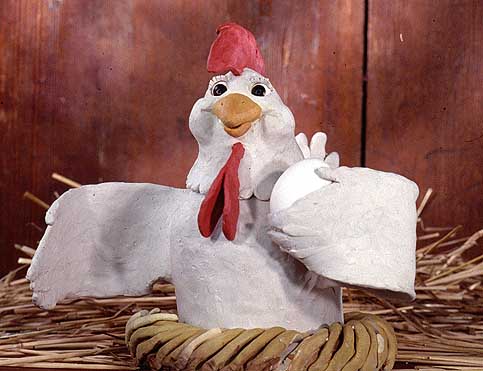|
The Animator's Survival Kit
''The Animator's Survival Kit: A Manual of Methods, Principles, and Formulas for Classical, Computer, Games, Stop Motion, and Internet Animators'', or simply ''The Animator's Survival Kit'' is an instructional book by animator and director Richard Williams. The book includes techniques, advice, tips, tricks, and general information on the history of animation. DVDs Animation examples from the book combined with footage from Richard Williams' masterclasses have been put into a 16-volume DVD box set titled ''The Animator's Survival Kit – Animated''. The logo from the book cover was completely animated in the traditional style, taking Williams and his animators 9 months to complete. Williams also included some early drafts of his own work from previous projects. Reception The book was met with universal acclaim. Chris Wedge, the director of ''Epic'' and ''Ice Age'', wrote about the book: "What I came out with was a complete re-structuring of animation, how I saw animati ... [...More Info...] [...Related Items...] OR: [Wikipedia] [Google] [Baidu] |
Richard Williams (animator)
Richard Edmund Williams ( Lane; March 19, 1933 – August 16, 2019) was a Canadian-British animator, voice actor, and painter. A three-time Academy Award winner, he is best known as the animation director of ''Who Framed Roger Rabbit'' (1988)—for which he won two Academy Awards—and as the director of his unfinished feature film ''The Thief and the Cobbler'' (1993). His work on the short film ''A Christmas Carol (TV special), A Christmas Carol'' (1971) earned him his first Academy Award for Best Animated Short Film, Academy Award. He was also a film title sequence designer and animator. Other works in this field include the title sequences for ''What's New Pussycat?'' (1965) and ''A Funny Thing Happened on the Way to the Forum (film), A Funny Thing Happened on the Way to the Forum'' (1966), title and linking sequences in ''The Charge of the Light Brigade (1968 film), The Charge of the Light Brigade'', and the intros of the eponymous cartoon feline for two of the later ''The Pin ... [...More Info...] [...Related Items...] OR: [Wikipedia] [Google] [Baidu] |
Cartoon Brew
Cartoon Brew is an animation news website created by Amid Amidi and animation historian Jerry Beck that was launched on 15 March 2004. Cartoon Dump It also created '' Cartoon Dump'', a weekly podcast showing poorly made TV cartoons featuring ''Mystery Science Theater 3000''s Frank Conniff. Reception The site has published news articles, commentaries and reviews regarding the animation industry. The Comics Beat called it the "essential cartoon blog", while animator Francis Glebas cited it as "the place to go for the latest in animation news". Criticism On August 14, 2020, the site attracted criticism, firstly from Dana Terrace, the creator of ''The Owl House'', for their story, "Disney Executive Tried to Block Queer Characters in 'The Owl House,' Says Creator." Terrace clarified that her push for queer characters like Luz and Amity in ''The Owl House'' had been "extremely supported" by executives for the show, and that she was "excited for future shows", while Owen Dennis o ... [...More Info...] [...Related Items...] OR: [Wikipedia] [Google] [Baidu] |
Faber & Faber Books
Faber may refer to: People * Faber (surname) Companies * Faber & Faber, publishing house in the United Kingdom * Faber-Castell, German manufacturer of writing instruments * Faber Music, British sheet music publisher * Eberhard Faber, German art supply manufacturer best known (in the United States) by their brand of pencil and eraser In fiction * Faber College, fictional school providing the setting for the movie ''National Lampoon's Animal House'' * Faber (Fahrenheit 451), character in Ray Bradbury's science fiction novel ''Fahrenheit 451'' Places * Faber, Virginia, a community in the United States * Mount Faber, second highest peak in Singapore Other uses * ''Faber'', pseudonym of the Italian singer-songwriter Fabrizio De André * Faber (EP), ''Faber'' (EP), a 2006 EP by Faber Drive * Faber (grape), grape variety also known as ''Faberrebe'' * FABER test (Flexion Abduction External Rotation), a test for evidence of hip arthritis * Faber Towers, landmark in Kuala ... [...More Info...] [...Related Items...] OR: [Wikipedia] [Google] [Baidu] |
Animation Techniques
Animation is a filmmaking technique whereby still images are manipulated to create moving images. In traditional animation, images are drawn or painted by hand on transparent celluloid sheets to be photographed and exhibited on film. Animation has been recognised as an artistic medium, specifically within the entertainment industry. Many animations are either traditional animations or computer animations made with computer-generated imagery (CGI). Stop motion animation, in particular claymation, has continued to exist alongside these other forms. Animation is contrasted with live action, although the two do not exist in isolation. Many moviemakers have produced films that are a hybrid of the two. As CGI increasingly approximates photographic imagery, filmmakers can easily composite 3D animations into their film rather than using practical effects for showy visual effects (VFX). General overview Computer animation can be very detailed 3D animation, while 2D compute ... [...More Info...] [...Related Items...] OR: [Wikipedia] [Google] [Baidu] |
History Of Animation
Animation, the method for creating moving pictures from still images, has an early history and a modern history that began with the advent of celluloid film in 1888. Between 1895 and 1920, during the rise of the cinematic industry, several different animation techniques were developed or re-invented, including stop-motion with objects, puppets, clay or cutouts, and drawn or painted animation. Hand-drawn animation, which mostly consisted of a succession of still images painted on cels, was the dominant technique of the 20th century and became known as traditional animation. Today, computer animation is the dominant animation technique in most regions, although traditional animation, like Japanese anime and European hand-drawn productions, remains popular outside of the US. Computer animation is mostly associated with a three-dimensional appearance with detailed shading, although many different animation styles have been generated or simulated with computers. Some productions may ... [...More Info...] [...Related Items...] OR: [Wikipedia] [Google] [Baidu] |
Books About Film
A book is a structured presentation of recorded information, primarily verbal and graphical, through a medium. Originally physical, electronic books and audiobooks are now existent. Physical books are objects that contain printed material, mostly of writing and images. Modern books are typically composed of many pages bound together and protected by a cover, what is known as the ''codex'' format; older formats include the scroll and the tablet. As a conceptual object, a ''book'' often refers to a written work of substantial length by one or more authors, which may also be distributed digitally as an electronic book (ebook). These kinds of works can be broadly classified into fiction (containing invented content, often narratives) and non-fiction (containing content intended as factual truth). But a physical book may not contain a written work: for example, it may contain ''only'' drawings, engravings, photographs, sheet music, puzzles, or removable content like paper dolls ... [...More Info...] [...Related Items...] OR: [Wikipedia] [Google] [Baidu] |
Animation Books
Animation is a filmmaking technique whereby still images are manipulated to create moving images. In traditional animation, images are drawn or painted by hand on transparent celluloid sheets to be photographed and exhibited on film. Animation has been recognised as an artistic medium, specifically within the entertainment industry. Many animations are either traditional animations or computer animations made with computer-generated imagery (CGI). Stop motion animation, in particular claymation, has continued to exist alongside these other forms. Animation is contrasted with live action, although the two do not exist in isolation. Many moviemakers have produced films that are a hybrid of the two. As CGI increasingly approximates photographic imagery, filmmakers can easily composite 3D animations into their film rather than using practical effects for showy visual effects (VFX). General overview Computer animation can be very detailed 3D animation, while 2D computer an ... [...More Info...] [...Related Items...] OR: [Wikipedia] [Google] [Baidu] |
Computer Animation
Computer animation is the process used for digitally generating Film, moving images. The more general term computer-generated imagery (CGI) encompasses both still images and moving images, while computer animation refers to moving images. Virtual cinematography, Modern computer animation usually uses 3D computer graphics. Computer animation is a digital successor to stop motion and traditional animation. Instead of a physical model or illustration, a digital equivalent is manipulated frame-by-frame. Also, computer-generated animations allow a single graphic artist to produce such content without using actors, expensive set pieces, or Theatrical property, props. To create the illusion of movement, an image is displayed on the computer monitor and repeatedly replaced by a new similar image but advanced slightly in time (usually at a rate of 24, 25, or 30 frames/second). This technique is identical to how the illusion of movement is achieved with television and Film, motion pictur ... [...More Info...] [...Related Items...] OR: [Wikipedia] [Google] [Baidu] |
Flash Animation
Adobe Flash animation (formerly Macromedia Flash animation and FutureSplash animation) is an animation that is created with the Adobe Animate (formerly Flash Professional) platform or similar animation software and often distributed in the SWF file format. The term Adobe Flash animation refers to both the file format and the medium in which the animation is produced. Adobe Flash animation has enjoyed mainstream popularity since the mid-2000s, with many Adobe Flash-animated television series, television commercials, and award-winning online shorts being produced since then. In the late 1990s, when bandwidth was still at 56 kbit/s for most Internet users, many Adobe Flash animation artists employed limited animation or cutout animation when creating projects intended for web distribution. This allowed artists to release shorts and interactive experiences well under 1 MB, which could stream both audio and high-end animation. Adobe Flash is able to integrate bitmaps and ot ... [...More Info...] [...Related Items...] OR: [Wikipedia] [Google] [Baidu] |
Stop-motion Animation
Stop-motion (also known as stop frame animation) is an animated filmmaking and special effects technique in which objects are physically manipulated in small increments between individually photographed frames so that they will appear to exhibit independent motion or change when the series of frames is played back. Any kind of object can thus be animated, but puppets with movable joints (puppet animation) or clay figures (claymation) are most commonly used. Puppets, models or clay figures built around an armature are used in model animation. Stop motion with live actors is often referred to as pixilation. Stop motion of flat materials such as paper, fabrics or photographs is usually called cutout animation. Terminology The term "stop-motion", relating to the animation technique, is often spelled without a hyphen as "stop motion"—either standalone or as a compound modifier. Both orthographic variants, with and without the hyphen, are correct, but the hyphenated one is th ... [...More Info...] [...Related Items...] OR: [Wikipedia] [Google] [Baidu] |
Character Animation
Character animation is a specialized area of the animation process, which involves bringing animated s to life. The role of a character animator is analogous to that of a film or stage actor and character animators are often said to be "actors with a pencil" (or a mouse). Character animators breathe life in their characters, creating the illusion of thought, emotion and personality. Character animation is often distinguished from creature animation, which involves bringing photorealistic animals and creatures to life. Origins Winsor McCay's '' Gertie the Dinosaur'' (1914) is often considered the first example of true character animation. Later, Otto Messmer imbued Felix the Cat with an instantly recognizable personality during the 1920s. In the 1930s, Walt Disney made character animation a particular focus of his animation studio, best showcased in productions such as '' Three Little Pigs'' (1933), ''Snow White and the Seven Dwarfs'' (1937), ''Pinocchio'' (1940), and ''Dum ... [...More Info...] [...Related Items...] OR: [Wikipedia] [Google] [Baidu] |






